
Valentine’s day and the Tudors

Valentine’s day and the Tudors
Nowadays, in England and many other countries, February 14 is traditionally the day to present gifts like chocolates and flowers or to send cards and messages to those we love — all in the name of St Valentine. By the late 15th century, the date recognised as the occasion to choose a Valentine and exchange gifts. The tradition continued and in 1537 King Herny VIII declared the 14th day of February a public holiday.
But who exactly was St Valentine? There are a couple of candidates.
Valentinus, a priest, who supposedly disobeyed an edict from the Roman Emperor, Claudius II .The emperor, believing unmarried men made better soldiers, outlawed marriage for young men. Valentinus felt sorry for the young couples who were unable to wed and carried on performing ceremonies until he was caught. The story goes that he was then imprisoned in a nobleman’s house where he healed his captor’s blind daughter. That prompted the whole household to convert to Christianity which didn’t go down well at all and the unfortunate priest was sentenced to death. Before Valentinus was tortured and beheaded on February14, he is said to have sent the girl a note signed “Your Valentine.”
Saint Valentine of Terni, a bishop, is also supposed to have carried out secret weddings, and been beheaded by Claudius II outside Rome.
It’s possible that the stories of these two legendary martyrs have become entangled into one who is remembered as St Valentine.
Association with love and romance
The celebration of St Valentine’s Day on February 14 may have been introduced by the early Christian church to replace the holiday of Lupercalia. This was a fertility festival dedicated to Faunus, the Roman god of agriculture, and the Roman founders Romulus and Remus, which was celebrated on February 15.
By medieval times, in England and France, St Valentine had become associated with love and romance. Perhaps that’s why he became one of the most popular saints. People also called on him for interventions regarding beekeeping and epilepsy, as well as for the plague, fainting and traveling. And, of course, he’s also the patron saint of engaged couples and happy marriages.
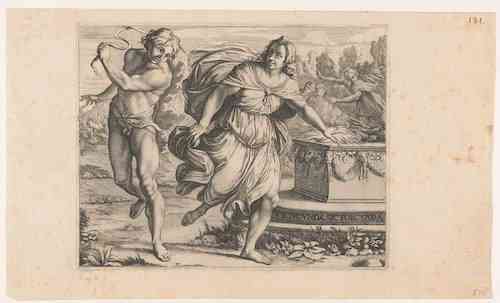
The birds wedding day
When I was child I was told that St Valentine's Day was the birds’ wedding day — the day on which birds chose their mate, an idea Chaucer refers to in 1581/82 in his poem "The Parliament of Fowls”.
“For this was on seynt Volantynys day. Whan euery bryd comyth there to chese his mate.”
However, Chaucer may have been commemorating King Richard II’s betrothal to Anne of Bohemia on May 3, which was the feast day of a different Saint, St Valentine of Genoa, an early bishop of Genoa. It seems people liked the idea of celebrating lovers and romance on St Valentine's Day, but everyone was more familiar with the Saint whose feast was on February 14.
The connection with the birds’ wedding day seems to have continued. Towards the end of Shakespeares A Midsummer’s Nights Dream, we find Theseus the Duke of Athens stumbling upon the four sleeping lovers and comparing them to mating birds by saying:
“Good morrow, friends. Saint Valentine is past. Begin these woodbirds but to couple now?” (Midsummer Night's Dream, Act IV, scene 1)
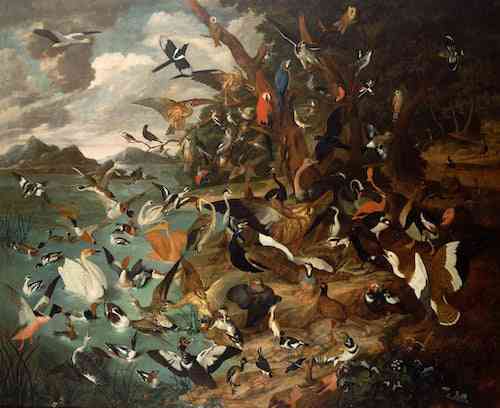
Valentine’s Day messages
The first known written Valentine’s message comes in 1415 from Charles, Duke of Orleans, imprisoned in the Tower of London after the Battle of Agincourt, to his wife. A few years later Henry V is thought to have commissioned John Lydgate to compose a poem for him to send to Catherine of Valois. In “A Valentine to her that Excelleth All” Lydgate writes of how it was the custom on Valentine's Day for people to choose their love:
“To look and search Cupid's calendar, And choose their choose, by great affection.”
Late fifteenth and sixteenth century
So it seems that the date became well established as the time to choose a lover, but we know only a little of how the day was actually celebrated. In her book, “Pleasures and Pastimes in Tudor England” Alison Sim tells us about references in the Paston letters ( a remarkable surviving collection of correspondence between members of the Norfolk gentry family, named Paston) that reveal that Valentine's Day was certainly marked in the late fifteenth century. Valentine's Day is mentioned three times during the 1470s and one of these letter describes a process of choosing “Valentines” by lot from amongst a group of friends, each of whom bought their valentine a gift . This sounds a bit like a Secret Santa!
This tradition seems to have continued through the sixteenth century. According to Alison Sim, the steward’s accounts of Secretary of State Sir William Petre (c. 1505-1572) show that he gave lengths of gold cloth and gold trinkets to his allotted valentine. Even the servants were included in this valentine tradition in his household. one year Sir William drew one of the maids by lot and gave her a quarter’s extra wages as her valentine gift. It seems likely that this custom was practised mainly by the wealthy. Later the exchange of gifts may have become more widespread.
Although it doesn’t specifically mention St Valentines day, Shakespeare’s The Winter’s Tale includes a list of gifts the pedlar has for sale that a man might wish to present to his lady love
Lawn as white as driven snow;
Cyprus black as e’er was crow;
Gloves as sweet as damask roses;
Masks for faces and for noses;
Bugle bracelet, necklace amber,
Perfume for a lady’s chamber;
Golden quoifs and stomachers,
For my lads to give their dears;
Pins and poking-sticks of steel,
What maids lack from head to heel;
Come buy of me, come; come buy, come buy;
Buy lads, or else your lasses cry;
Come buy.
How did the Tudor Royals mark the day?
Explicit references to Valentine's Day are scant in court records, but we might assume that it had some significance to King Henry VIII when he declared February 14 a public holiday in 1537. His third wife Jane Seymour gave birth to the future Edward VI on 12 October 1537.
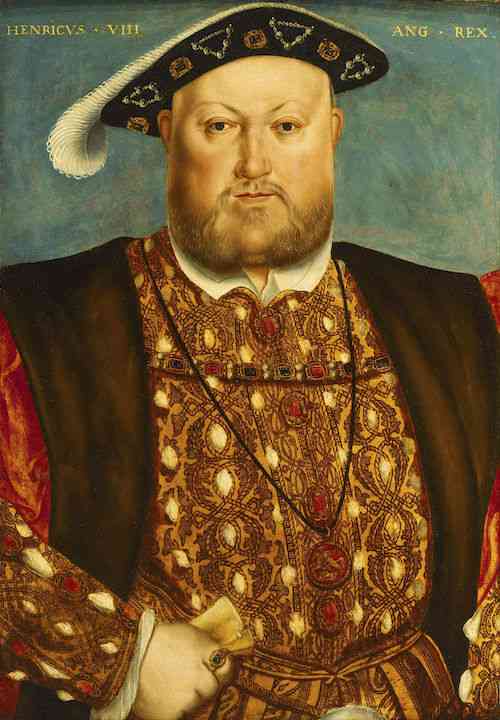
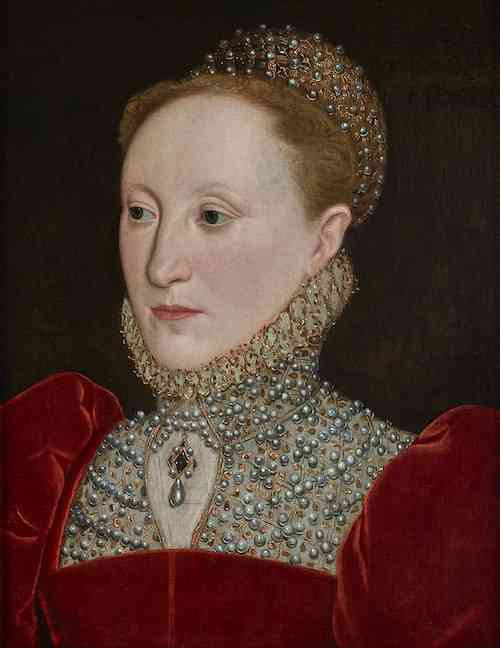
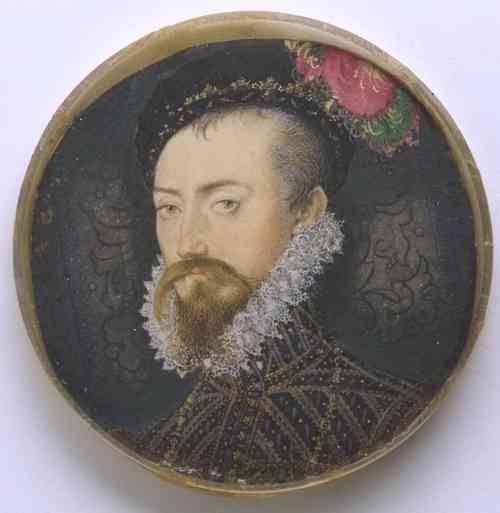
One intriguing reference hints at a possible secret romantic assignation on Valentines’s Day. On Feb 14 1566 Queen Elizabeth I went to dinner at the Earl of Pemboke’s house Baynard’s Castle in disguise. The Spanish ambassador De Silva wrote to his master, Philip II, two days later: ‘The Earl of Leicester came from Greenwich to the Earl of Pembroke’s house on the 13th, the rumour being that he was going to his own home. The Queen went the next day disguised to dine with them, accompanied by the Admiral and his wife [Lord and Lady Clinton]. After dinner the Queen returned to Greenwich, the Earl of Pembroke left for his estates and Lord Robert retired to his house, where he will be for about ten days’.
Weddings
Early February, which, as well as St Valentine's Day, also coincided with Shrovetide, may have been considered an auspicious date for weddings. On February 14 1580 the French Ambassador Mauvissière wrote to King Henri III of France: ‘The Queen invited me next day to a great wedding and assembly which lasted for two days’, bride and groom being ‘both related to her’. In 1577 on February 15, Richard Brackenbury (a Gentleman Usher) wrote to the Earl of Rutland, with news of marriages of the Queen’s ladies: ‘I hope to see you here this merry Shrovetide. Mistress Burgh makes her offering on Monday next’. On February 15 Richard Bulkeley was knighted ‘day before his marriage’ which took place on February 18.
And in 1599 on February 12 at St Peter le Poer, London Thomas Tyringham, the son of Anthony Tyringham, married Frances Gorges, daughter of Helena Lady Marquis of Northampton and her second husband Sir Thomas Gorges, a Groom of the Privy Chamber.
Superstitions
A number of superstitions were attached to Valentine’s Day, including Ophelia’s belief that the first person she saw on Valentine's Day would be her true love. In Hamlet Ophelia refers to the superstition that if two single people meet on the morning of Saint Valentine's Day they will likely get married.
Tomorrow is Saint Valentine’s Day
All in the morning betime,
And I a maid at your window,
To be your Valentine.
There were other ways of predicting who you might marry, such as the first bird a woman saw on Valentine’s Day morning — one listing suggests that a blackbird meant a clergyman (this must be post-reformation), a robin a sailor, a gold-finch a rich man, a blue tit a happy man, a dove a good man, but a woodpecker meant she would remain an old maid.
Or she could try placing a bay leaf under her pillow on Saint Valentine’s Eve to dream of her intended.
If all else failed, in a leap year women could propose to men on Valentine's day as well as on February 29.
Rosemary Griggs
14 February 2023
This article draws on a variety of sources including
Alison Simm :Pleasures and Pastimes in Tudor England,
Folgerpeida The Elizabethan Court Day by Day
Illustrations from Wikimedia Commons
Luperclia afterpainting by: Annibale Carracci Printmaker: anonymous The Rijksmuseum in Amsterdam.
Saint Valentine of Terni from Frescoes in the church of Santa Maria del Monumento, Terni
The Parliament of Birds, an 18th-century oil painting by Carl Wilhelm de Hamilton
Herny Vii Afte Hans Holbein (National Maritime Museum)
English School circa 1560s Elizabeth I of England (1533–1603) Wiess Gallery
Portrait miniature of Robert Dudley, Earl of Leicester (1532-1588), 1571-1574, by Nicholas Hilliard (V&A)
(The red rose is from my devon garden)
If you’ve enjoyed this post please do share on social media using the buttons below.